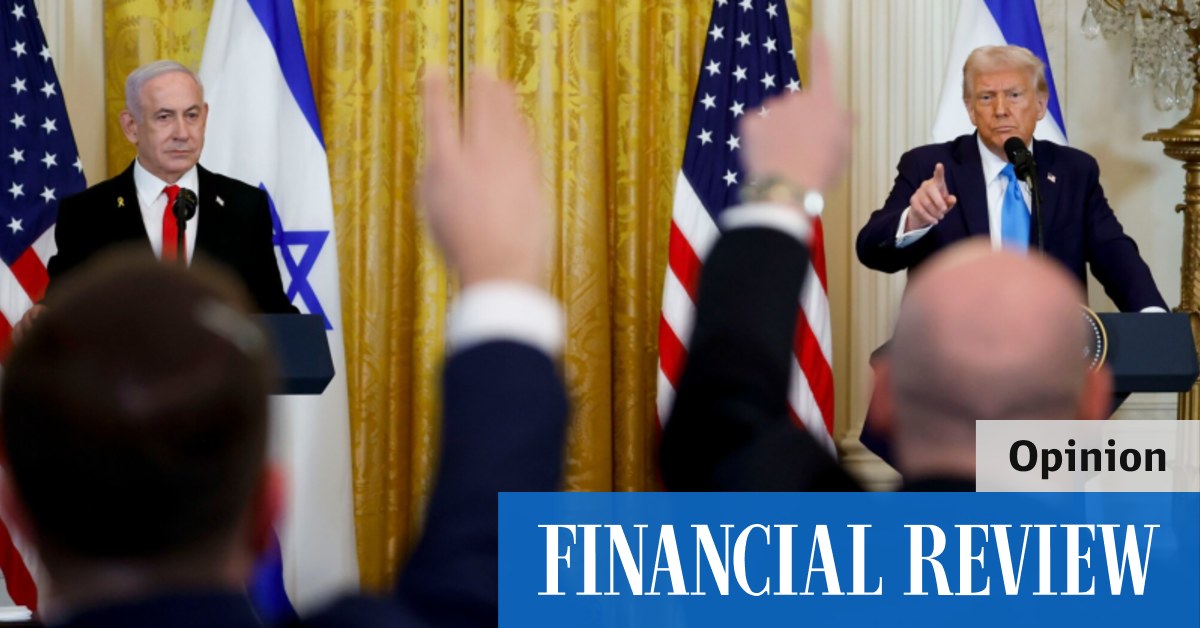Trump's Gaza Development Plan: A Realistic Assessment

Discover more detailed and exciting information on our website. Click the link below to start your adventure: Visit Best Website. Don't miss out!
Table of Contents
Trump's Gaza Development Plan: A Realistic Assessment
Donald Trump's proposed Gaza development plan, unveiled during his presidency, generated significant debate and remains a subject of ongoing discussion. While ambitious in scope, its feasibility and long-term impact are questions that require careful consideration. This article provides a realistic assessment of the plan, examining its key components, potential benefits, and significant challenges.
Key Components of the Plan:
Trump's plan, often referred to as the "Deal of the Century," included a significant economic component focused on Gaza's development. Key elements reportedly centered on:
- Massive Investment: The plan proposed substantial financial investment from various international donors to stimulate Gaza's economy. This investment was intended to create jobs, improve infrastructure, and enhance living conditions.
- Infrastructure Development: A key focus was on upgrading Gaza's crumbling infrastructure, including its electricity grid, water systems, and transportation networks. This was seen as crucial for improving the daily lives of Gazans and attracting foreign investment.
- Tourism and Private Sector Growth: The plan aimed to boost Gaza's tourism sector and foster the growth of its private sector. This included initiatives to improve security and create a more business-friendly environment.
- Regional Cooperation: The success of the plan heavily relied on regional cooperation, particularly between Israel and its neighboring countries. This aspect proved to be one of the most significant hurdles.
Potential Benefits:
If successfully implemented, the plan held the potential for significant benefits for Gaza:
- Economic Growth: Increased investment and infrastructure development could have stimulated economic growth, creating jobs and reducing poverty.
- Improved Living Conditions: Upgrades to essential services like electricity and water would have dramatically improved the daily lives of Gazans.
- Enhanced Security: Improved security measures, while controversial, were intended to create a more stable environment conducive to economic development.
Significant Challenges and Criticisms:
Despite its ambitious goals, the Trump administration's Gaza development plan faced numerous challenges and attracted considerable criticism:
- Funding Shortfalls: Securing the massive funding required remained a major obstacle. International donors were hesitant to commit significant resources without clear guarantees of success and accountability.
- Political Obstacles: The plan's implementation was heavily reliant on cooperation between Israel and Palestinian factions, a notoriously difficult dynamic. The ongoing Israeli-Palestinian conflict significantly hampered progress.
- Security Concerns: The plan's security components, while intended to improve stability, were criticized by some as potentially exacerbating existing tensions.
- Lack of Palestinian Buy-in: The plan's lack of significant Palestinian buy-in from the outset significantly undermined its potential for success. Many Palestinians viewed it as unfairly biased towards Israel.
- Humanitarian Crisis: The ongoing humanitarian crisis in Gaza, characterized by poverty, unemployment, and limited access to essential services, presented a formidable challenge to any development plan.
Conclusion:
Trump's Gaza development plan, while offering a potentially transformative vision, faced insurmountable obstacles. The lack of sufficient funding, political gridlock, and the absence of widespread Palestinian support ultimately hindered its implementation. While the plan's core principles – improved infrastructure, economic growth, and enhanced security – remain important goals, achieving them requires a fundamentally different approach that addresses the underlying political realities and prioritizes Palestinian needs and participation. Moving forward, a more inclusive and collaborative strategy is essential for achieving sustainable development in Gaza. Further research into the specific details of the plan and the reactions of various stakeholders is recommended for a more comprehensive understanding. This includes examining reports from organizations like the UN and independent think tanks working in the region.

Thank you for visiting our website wich cover about Trump's Gaza Development Plan: A Realistic Assessment. We hope the information provided has been useful to you. Feel free to contact us if you have any questions or need further assistance. See you next time and dont miss to bookmark.
Featured Posts
-
Louane Au Stade De France Son Hymne Eurovision Revele
Feb 06, 2025
-
Nato Chiefs Confidence In U S Canada Trade Relations Amidst Allied Concerns
Feb 06, 2025
-
Sport X Fortaleza Ao Vivo Onde Assistir A Partida Da Copa Do Brasil
Feb 06, 2025
-
Alphabet Stock Plunges Missed Revenue Targets Dampen Investor Confidence
Feb 06, 2025
-
Trump And Musks Agency Overhauls Congress Remains Silent
Feb 06, 2025
